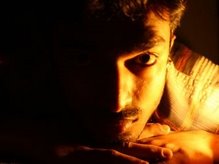Chak De
When I started my work on stereovision I used to download stereo images from the internet for my experiments. I didn’t have a camera then. By the time I could afford one, the statement “taking images at an offset” had become as synonymic as stereo images. Since I couldn’t afford two similar cameras for both cost and reasons of inutility I started to take my own stereo images by moving the camera a bit to the side (to create that offset) for shooting the second image. I even went to the extent of thinking to developing an attachment for my tripod to create a flat base for this movement! I always thought that research would make the mind sharper to thinking of new ways to deal with the subject, but seems like it didn’t work out in my case at that instant. Instead of developing an attachment for my tripod, why couldn’t I think of developing an attachment for my camera so that I could totally eliminate this requirement of moving it for shooting the second image? It didn’t take much time for this innovation to bloom in me and I immediately rushed to the nearby glass vendor to prepare this arrangement.
 It is simple (figure only for conceptual understanding). Like our eyes, I keep two plane glasses at an offset and direct light to the lens of my camera through a pair of pair of 45 degree mirrors as shown in the figure. So in a single sensor I capture both the images, each on one half of it.
It is simple (figure only for conceptual understanding). Like our eyes, I keep two plane glasses at an offset and direct light to the lens of my camera through a pair of pair of 45 degree mirrors as shown in the figure. So in a single sensor I capture both the images, each on one half of it.Given a camera and a requirement to take stereo images, this arrangement was anyone’s mind game. I thought simple things like these need not be documented. A few months after this finding I saw a paper on exactly the same concept from a university in Switzerland. Do we really need PhDs to build this school level optics? Now I know the reason behind the very poor numbers behind India’s contribution towards the world’s papers and patents. Are we too fainéant to put our findings on paper or do we think we are not up to the mark in creating new things when compared to others? That too when others are confident of such simple findings.
CHAK DE



